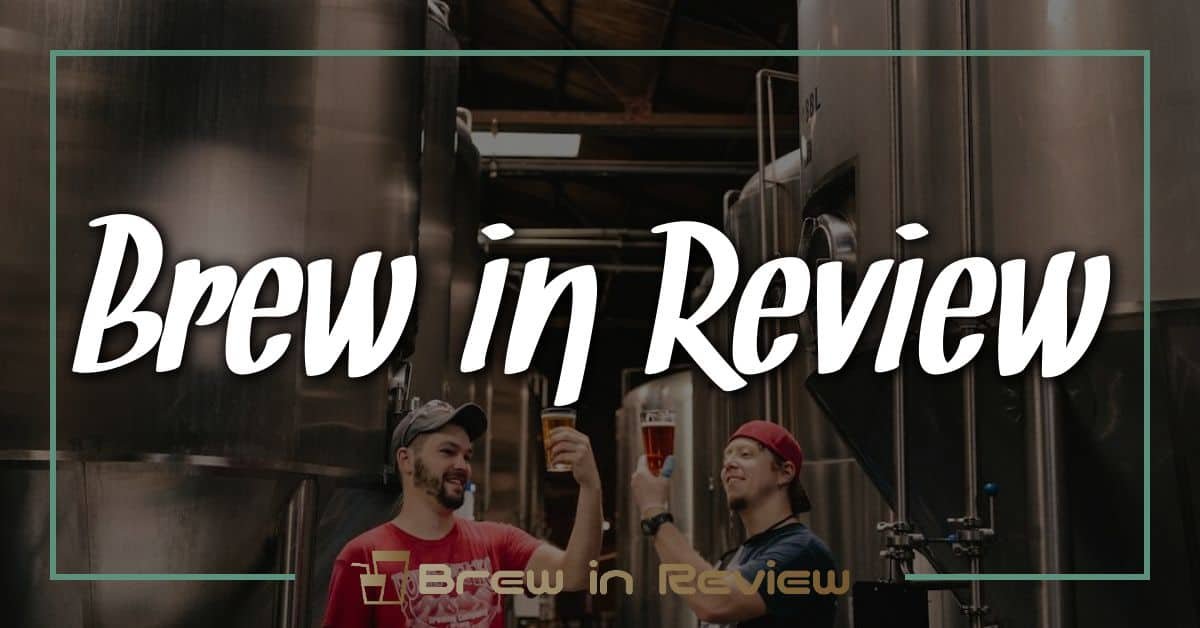After nearly 14 years of dry laws, the end of Prohibition in 1933 marked a turning point for American brewing. It wasn’t just about lifting the ban on alcohol; it sparked a renaissance of creativity and craftsmanship in the brewing industry. As I dive into this fascinating era, I can’t help but feel the excitement that brewers must have felt as they returned to their craft.
The post-Prohibition revival brought a wave of innovation and experimentation, leading to the diverse beer culture we enjoy today. From small-town breweries to large-scale operations, this period laid the groundwork for the craft beer movement that continues to thrive. Join me as I explore the stories, challenges, and triumphs of brewers who shaped the landscape of American beer following the repeal.
Overview of Post-Prohibition Brewing Revival
The end of Prohibition in 1933 transformed the American brewing landscape. Brewers emerged with renewed vigor, eager to craft a wide variety of beers. The repeal signified not just a return to brewing but also a golden age of creativity and craftsmanship in the industry.
Innovation marked this era. Many brewers experimented with recipes, ingredients, and brewing techniques. Notable styles, such as pale ales and porters, reappeared, reflecting a diverse range of flavors. Regional variations flourished, giving rise to unique local breweries that catered to specific tastes and preferences.

Challenges accompanied this revival. Many small breweries struggled to compete with established giants while facing regulatory hurdles. Limited access to resources and distribution channels further complicated their efforts. Despite these obstacles, the passion and determination of countless brewers spurred a movement that celebrated quality over quantity.
From the 1970s onward, the craft beer revolution took off, propelling small breweries into the spotlight. As consumers sought out artisanal products, breweries began to thrive. This shift reshaped the American palate, driving an appreciation for distinct flavors and brewing traditions.
Each style brewed since then contributes to the rich tapestry of American beer culture. As I continue my journey in brewing, I recognize the vital role these pioneers played in developing the vibrant brewing community I’m proud to be a part of today.
Historical Context
The repeal of Prohibition in 1933 marked a pivotal moment for the American brewing industry. This event not only reinstated the legality of alcohol but also inspired a remarkable resurgence in creativity among brewers.
The End of Prohibition
The end of Prohibition transformed the landscape of brewing. Many brewers returned to their craft, eager to create after years of silence. The date—December 5, 1933—signified freedom and opportunity. Breweries reopened, and entrepreneurs emerged, infusing passion and innovative ideas into the beer-making process. This newfound liberty unleashed a wave of experimentation, leading to a rich variety of styles and flavors that began to define American beer.
Impact on American Brewing Culture
The impact on American brewing culture has been profound. After Prohibition, brewers sought to distinguish themselves through unique recipes and techniques. This exploration paved the way for styles like pale ales and porters to thrive alongside regional specialties.
Small breweries faced significant challenges competing against established giants. Many battled regulatory restrictions while aiming for quality over quantity. Despite these hurdles, the emphasis on craftsmanship laid the groundwork for today’s vibrant brewing community.
By the 1970s, craft beer emerged as a driving force, igniting interest in diverse flavors and brewing traditions. The journey from those early days of revival to the present illustrates the evolution of American beer culture. Each new brew contributes to an expanding tapestry, embodying the spirit of creativity and community that continues to thrive today.
Key Figures and Breweries
The revival of American brewing after Prohibition featured influential figures and innovative breweries that paved the way for today’s craft beer movement. These pioneers shaped the landscape, inspiring both professional brewers and home brewers alike.
Pioneers of the Revival
Prominent figures emerged, each leaving a distinctive mark on brewing.
- Brooklyn Brewery’s Steve Hindy: Founder of Brooklyn Brewery, Hindy advanced the craft beer movement in the 1980s. His commitment to traditional brewing techniques and local ingredients helped revive artisanal beer in New York.
- Sierra Nevada’s Ken Grossman: As a pioneer of the pale ale style, Grossman played a critical role in the craft beer revolution. His innovative brewing approach emphasized quality and sustainability, setting a benchmark for future craft brewers.
- Anchor Brewing’s Fritz Maytag: By reviving the historic Anchor Steam Beer in the 1960s, Maytag laid the foundation for modern craft brewing. His dedication to unique brewing practices inspired a generation of brewers to experiment with traditional styles.
These figures not only pioneered quality brewing but also served as teachers, sharing their knowledge and passion with aspiring brewers, including many home brewers.
Notable Breweries Established Post-Prohibition
Several key breweries opened their doors after Prohibition, fostering diversity and creativity in the American beer landscape.
- Brooklyn Brewery (1988): Known for its flagship Brooklyn Lager, this brewery emphasizes traditional European brewing methods while embracing local partnerships.
- Sierra Nevada Brewing Co. (1980): Based in California, Sierra Nevada revolutionized the American palate with its Cascade-hopped Pale Ale. Their commitment to environmental sustainability sets an industry standard.
- Dogfish Head Craft Brewery (1995): This Delaware brewery stands out for its innovative recipes that incorporate unexpected ingredients like fruit and spices. Dogfish Head embraces creativity while pushing the boundaries of brewing.
These breweries exemplify the spirit of the post-Prohibition era, showcasing the growth and evolution of the American brewing industry. Each one shares a commitment to craft, flavor, and community, offering both inspiration and resources for those of us who brew at home.
Trends and Innovations
The Post-Prohibition brewing revival sparked a wave of creativity and innovation in beer crafting. As a professional brewer and passionate home brewer, I embrace the trends that have emerged and shaped the brewing landscape.
Craft Beer Movement
The craft beer movement transformed how we create and enjoy beer. Starting in the late 20th century, small breweries began focusing on quality, flavor, and traditional brewing methods. I see this firsthand in my local brewing community, where the emphasis lies on unique recipes and experimentation. Brewers produce small batches, allowing for innovative styles that appeal to diverse tastes. As consumers became more adventurous, genres like IPAs, stouts, and sour ales gained popularity, creating an ever-expanding palette for us to explore.
Revival of Traditional Brewing Techniques
The revival of traditional brewing techniques has breathed new life into the craft. I often find joy in using methods once deemed obsolete, like open fermentation or barrel aging, to enhance flavors. These techniques connect us to history while infusing our brews with character. The introduction of ingredients such as local grains, wild yeasts, and seasonal fruits has also encouraged experimentation, resulting in distinctive brews that reflect regional influences. Today’s brewers continually seek ways to honor traditional approaches while infusing modern creativity into their crafting, resulting in extraordinary and varied beer experiences.
Challenges Faced by Breweries
Brewing beer comes with its own set of challenges, even in a vibrant post-Prohibition landscape. I’ve personally encountered obstacles that can hinder creativity and growth.
Regulatory Hurdles
Navigating the complex web of regulations presents significant challenges for breweries. I’ve found that state and federal laws governing alcohol production can be quite overwhelming. Compliance with laws such as labeling requirements, licensing fees, and health regulations can divert attention from brewing innovative beers. For instance, a small brewery might spend months just securing the necessary permits before even starting production. Moreover, changes in regulations can create uncertainty, forcing breweries to adapt quickly or face penalties.
Market Competition
The competitive landscape of the brewing industry has intensified dramatically. While the post-Prohibition era sparked a creative revival, it also led to an influx of new breweries, each vying for attention. I’ve watched countless newcomers entering the market with unique offerings, which can make it challenging for established breweries to maintain their foothold. Competing for shelf space in retail settings and taps in local bars often requires not just quality, but also innovative marketing and branding strategies. Small breweries often struggle to stand out in a crowded marketplace, where consumer preferences can shift rapidly.
Conclusion
The post-Prohibition brewing revival truly reshaped the American beer landscape. It’s amazing to see how far we’ve come since that pivotal moment in 1933. The creativity and passion of brewers have not only given us a diverse range of flavors but also fostered a sense of community.
As I reflect on the stories of those pioneering brewers, I feel inspired by their resilience and innovation. Their dedication to quality and craftsmanship continues to influence today’s brewing scene. Despite the challenges that still exist, the spirit of exploration remains strong. I can’t wait to see where this journey takes us next in the world of craft beer. Cheers to the future of brewing!




